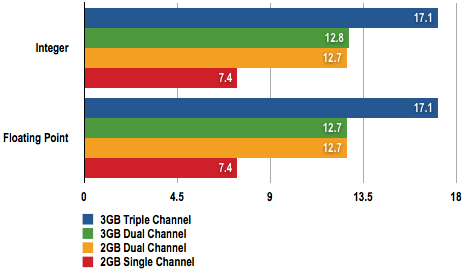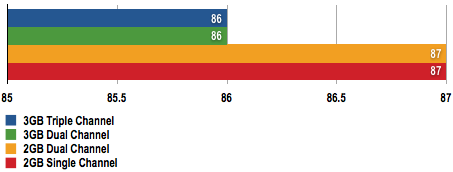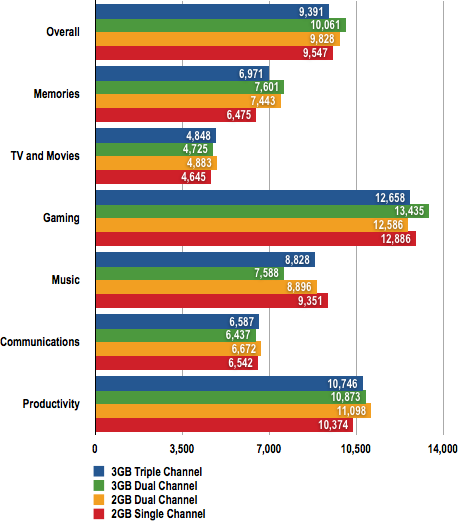This article is more than 1 year old
The best memory config for a Core i7 CPU
All the options tested
How good is triple-channel memory?
We started by setting up a test system with an Intel DX58SO motherboard along with a Core i7 920 processor, 3x1GB of Qimonda 1066MHz DDR 3 Ram and an Intel X25-M SSD running 32-bit Windows Vista Ultimate. The nature of the Intel motherboard with its four memory slots meant that we could install 3GB of memory in triple-channel mode, 2GB or 3GB in dual-channel, and 2GB in single-channel mode.
SiSoft Sandra Results
Bandwidth

Memory Bandwidth in Gigabytes per Second (GB/s)
Longer bars are better
Latency

Memory Latency in Nanoseconds (ns)
Shorter bars are better
SiSoft Sandra shows that the memory bandwidth climbs in big steps as each memory channel is added with 7.4GB/s for single channel, 12.7GB/s or 12.8GB/s for dual channel, and 17.1GB/s in triple channel mode. The memory bandwidth didn't scale as steeply as we might have hoped, and increased by some 70 per cent as each extra channel was added. The latency remained steady at 86ns or 87ns.
PCMark Vantage Results

Longer bars are better
We used PCMark Vantage to see what effect these huge changes in memory bandwidth would have across a range of tasks and were only slightly surprised to see that the answer is ‘very little’. The system delivers stacks of performance with 2GB of memory in single-channel mode which barely changed when we switched to 2GB in dual-channel mode. 3GB of dual-channel memory is a surprisingly effective configuration, while triple-channel appears to be a small step backwards.
Verdict
Don’t worry too much about triple-channel memory as two channels work just as well.
